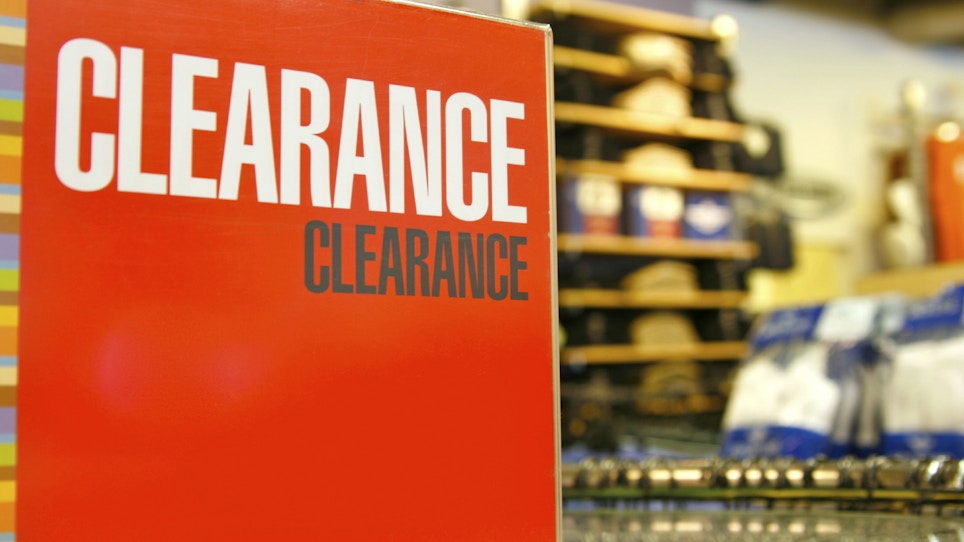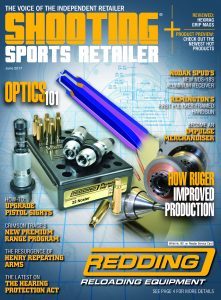Merely putting some firearms on the rack, ammo on shelves and accessories wherever you find the space will produce sales, but those sales won’t live up to your store’s potential. That’s passive merchandising, and such an approach tends to rely on chance and luck to produce sales — and that’s not the way to go if you need more sales or expect your store to become the go-to place for your area’s customers.
There are many factors that influence consumers to purchase — need, price, pride of ownership and love of the sport can all motivate — but those pale in comparison to the power of impulse merchandising.
Urgency And Bargains
The term “impulse merchandising” refers to highly effective methods of eliciting consumer purchases. There is a world of difference between sales made because a customer needs something versus sales driven by impulse merchandising, which is accomplished through advertising, signage, displays and merchandising techniques that drive the consumers to purchase the items in question. Of particular interest are those techniques that create a sense of urgency. Advertising messages such as “Three Days Only!,” “While Quantities Last!,” “Limit Two to a Customer!” and “Sale Ends Sunday!” all entice the consumer to make a purchase now instead of later by imparting the idea of a lost opportunity.
Most consumers have a strong fondness for a genuine bargain. So often we all make purchases not because we truly need the item, but because it’s such a good deal. Plus, no one likes to buy at “full retail”—we all want a deal. Thus the retailer who offers a recognizable, authentic or even a perceived bargain and couples that with a sense of urgency through effective signage and presentation will score major sales results.
Good Looks
In some cases, the visual appeal of a product alone can stimulate impulse purchases. Bulk merchandise piled high, placed in major traffic areas and embellished with a nice presentation and signage will usually generate additional sales. Add the component of perceived value, and the sales magic is even greater. Repetitive exposure of the same products at multiple places throughout the store is also an effective sales tool.
Easy Does It
A part of impulse merchandising is the convenience factor. Customers will often purchase high-use products simply because the retailer makes it convenient for them to do so. This is most evident at check-out areas, standing display end caps and other major traffic areas. Such items as batteries, snacks, soft drinks, sun glasses, sun block, magazines, T-shirts, socks, hats and flashlights are all examples of convenience purchases.
Today’s most successful retailers are driving sales through creative product selections, value-driven offerings and the use of messages that suggest that the consumer’s life will be better, easier and more enjoyable if they buy certain merchandise now, while it’s still in stock. Through the effective use of product selection, pricing, signage and presentation you can augment your sales of major items along with a full complement of accessory sales. Working with your vendors to obtain promotionally priced goods and point of sale presentation aids can add the icing to the cake. If you want to fire up your sales, take a long hard look at how, when and where you merchandise your inventory. In the end, you must separate your store from the pack and begin to stimulate sales, instead of relying on chance and good luck.
About the author
Robbie Brown has an extensive background in retailing, wholesaling, distribution service industries and consulting. He has been CEO of numerous companies in the shooting sports industry, including several retail chains and distribution companies. Brown consults for businesses of all sizes in both the merchandise and service industries, as well as for a variety of corporations, industry groups and trade associations. He is a frequent round-table moderator and speaker before industry trade shows, conventions and other corporate groups, and he has published more than 300 business-related articles in various trade magazines, delivered hundreds of speeches and served as a business advisor to many CEOs both inside and outside of the firearms industry.





